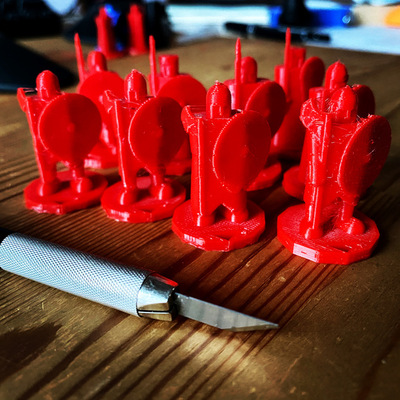
|
Les Oubliés |
| 2020-12-30 |
Les Oubliés
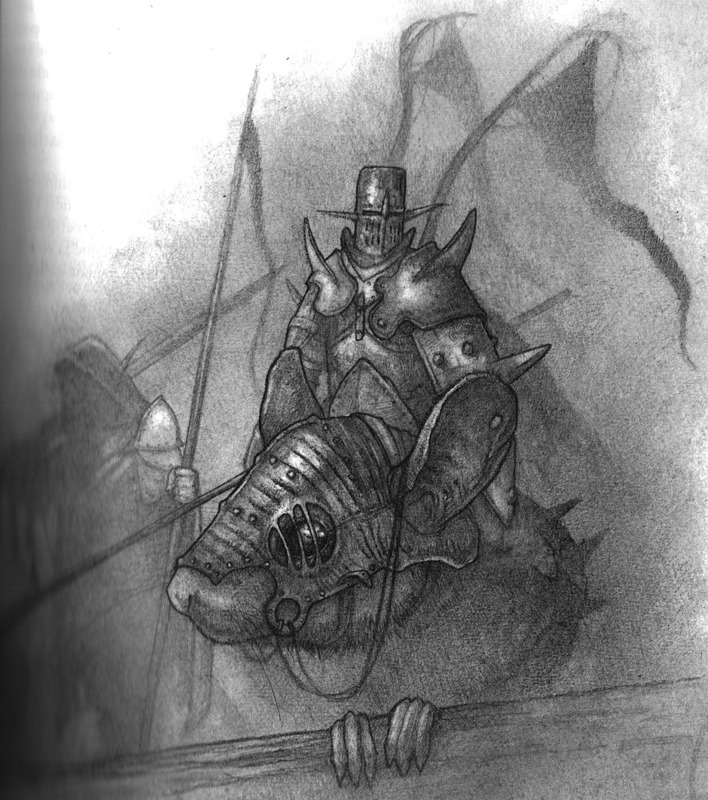
The player: "I am a sprite and the guard is a sprite as well, I try to seduce him!"
The gamemaster: "The guard notices you, there is a hint of a smile on his face. Roll your dice"
P1 rolls his two d12, a clear bright one and a dark one: "5 on the dream dice and 10 on the nightmare dice!"
GM: "So, your Seduction is at 6, 6 + 5 is 11, not 12. Your dream side cannot succeed, but your dark side give you 6 + 10, which is more than 12."
P1: "I go at the guard, closely, my eyes into his eyes, ..."
GM: "You go for the devious way, since your score of Dream is above your score of Nightmare, you have to incur 1 point of Nightmare debt"
P1: "I'll have to repay it later?"
GM: "Yes, at the end of the adventure, you'll have to repay your Dream or Nightmare debts, using points of experience, if you have XPs left, you can then improve your skills, adapt your Dream or Nightmare scores, or learn new spells"
P1: "I am not a spellcaster, could I have used a point of Dream to roll a second dream dice (rolling three dice in total) to make me magically more seducing?"
GM: "Yes, you could have, but look you've used your two Dream points in the previous fight to magically enhance your attacks..."
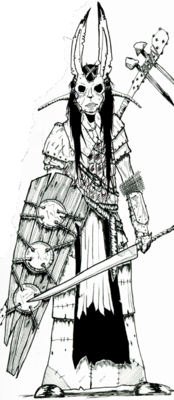
Les Oubliés is a french role-playing game involving tribes of faeries locked in our world around 1572. Most of the faeries have forgotten their original world, it doesn't matter to them, they have to survive here and now, among giants, rats, cats, and owls.
The twelve tribes of faeries all ended up in a gigantic Terra Incognita which is a fictional South of France city named St-Jean-de-Castel. Unknown to most of the faeries, outside of the city wall, the war of religions are ablaze. That makes for interesting layering of situations.
The faeries hate the giants (the humans), they are smelly, their voices are loud and obnoxious, but they dream, or sometimes, their dreams turn to nightmares.
Some of the faeries have specialized in extracting dream threads out of sleeping giants, it's a difficult job, being close to a giant when it dreams is equivalent to what we would call a bad trip, you have to hang tight, not succumb, extract the thread, and get away alive. Spellcasters need them for casting their spells, each thread is worth a lot.
Writing of nightmares, it seems that faeries from some kind of nightmare side have appeared, and some of our fearies of the dream are not deaf to the call of the nightmare.
Player characters are "Oubliés" (forgotten ones). Actually, growing up it started having visions. Those Oubliés gather in adventurers' companies lead by a captain and try to abide the by oath their forefathers had taken (and woke up inside of them).
The character creation doesn't involve any dice. One chooses its race, its tribe, its trade, distribute 12 points to up some skills, and a name.
The races are Fey (less than 4 cm), Gnome (4 to 5 cm), Belgfolk (5 to 6), Korrigan (5 to 6), Sprite (6 to 8), Goblin (7 to 8), Kobold (7 to 8), and Hairy Nutons (10 to 13 cm).
Choosing a race grants the character a base profile for its skill. Choosing a Belgfolk (Bergvolk, dwarf), gives you "hunter 1", "maker 5", "force of nature 5", "shadow 1", "savant 3". This means that your Belgfolk will start with 5 in each of the three skills under "maker", they are handicraft, intellect, and healing.
Each race description provides hints at how to get into the shoes of a character of the given race, and tells which tribe the race is mostly found in.
The next step is the selection of a tribe. There are eleven of them (the twelveth one got lost). They are Krograines, Karius, Ventrus, Sixts, Frinios, Pataches, Banshees, Vivitins, Margouts, Siccomores, and Huvons. (Choosing Siccomores restrains the next choice, trade, to Dream Mage).
Each tribe has a "majority race", so playing a minority race might be difficult (but rewarding for skills scores). Since the players are all Oubliés, they are already outcasts, but the tribe appartenance may play a very important part when the adventurer company has to deal with regular fearies not straying out of their tribes.
Choosing a tribe gives extra skill points. For example, choosing the Krograine tribe gives 2 to leadership, 2 to erudition, 1 extra language (old sprite), 1 to melee, 1 to ride, and 2 to will. Tribes each have myths and philosophies, and a territory (the Krograine live in the giants' benedictine cloister, the Siccomores are established in the jewish ghetto, ...).
Tribe and race description each come with key words, giving them semantic frames.
Before becoming an Oubliés, the character had learnt a trade. Now, as a member of an adventurer company, he has sometimes the opportunity to put that trade at use. There are eight trades, Dream Mage, Rêvirine, Knight Errant, Mercenary, Explorer-Merchantman, Cartographer, Sweet Dreamer, and Find-it-all.
Sweet dreamers are bards, while find-it-alls are thiefs (the victims are their thievery are giants most of the time).
Each trade provides extra skill points, for example, a mercenary adds 3 to mêlée, 3 to speed, 3 to athletism, and 1 to healing. The trade then tells what is the initial equipment of the character.
Then the player receives 12 extra points to add to his character skills. The contraints for the resulting skill scores are, no more than 6 for a skill listed in the four skills controlled by its choice of trade, and no more than 4 for other skills.
The next step is to assign Dream and Nightmare scores and points to the character. Since it's a child of the dream, the character gets a score of 1 in Dream and 0 in Nightmare. That gives 2 points of Dream and 0 points of Nightmare, and a start debt of 0 in Dream and 0 in Nightmare.
The final step is to give hit points to the character. It's simply the size of the race times 4, hence Belgfolk 8, Farfadet 12, Gnome 8, Kobold 12, Korrigan 8, Lutin 12, Hairy Nuton 16. The rulebook states that if you want to make it more gritty, feel free to multiply by 3 instead of 4.
Done, character created, no dice involved.
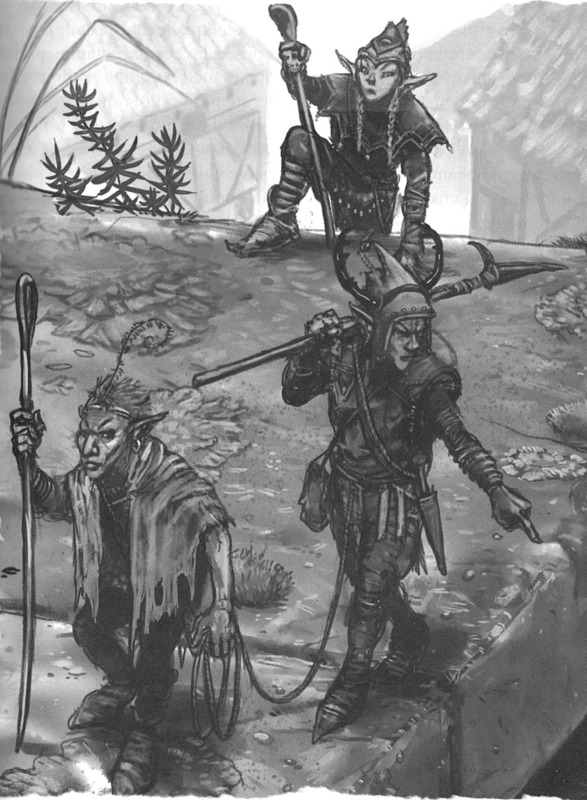
As written above, the characters are part of a compagnie d'oubliés lead by a captain. The character creation job is immediately followed by a session zero-esque definition of the ties between the members of the company.
The rulebook suggests creating the company then the characters is viable option as well. It doesn't tell who is the leader of the company. Maybe it's the character with the highest "leadership" score. In case of tie, who knows what might happen.
The group has to choose/devise with the gamemaster a "company power". For example, when the all the members of the company are in close range, they all gain +1 on damage, or the company has a reserve of 1 point of Dream that can be used by any member and regenerates at dawn, etc...
At the top of this post, I've shown how tests are performed. The player behind our faeries roll two d12, a clear one for the dream side and a dark one for the nightmare side. One can consume a dream or a nightmare point to have a third dice. In case of two dice, choosing the dream die has a straightforward good explanation, choosing the dark die implies the player has to explain the success in a devious way. If a third magical die is involved the player has to explain his success (or lack of) by a magical, ephemerous, magical effect.
"Roll for initiative" and the players throw each a d12, add their speed score and divide by 2 rounding up. If the result is bigger than 12, it's pulled back to 12. Players now place their initiative dice in front of them. The authors provide a combat sheet with an "en garde" box and an "on the sideline" box. If your character is surprised, place the initiative dice in the sideline box, else in the "en garde" box.
All the "en garde" characters then place their dice in the "action" box (well, outside of the "en garde" box, towards the center of the table. The "sideline" characters then place their dice in the "en garde" box of their sheet. Then, actions begins, the player with the highest dice result goes first, when its action is done, the dice goes back to "en garde". Once all the characters (and non-players characters have played), go back up to "All the 'en garde'..."
The players have to carefully move their initiative dice, the score is meaningful. Combat actions may have an impact on initiative scores, hence the usage as tracker (position and value).
The combat actions available to characters are:
- Move, athletism test
- Strike, corps à corps, or mêlée test
- Shoot, shooting test
- Anticipate event
- Find enemy (counter ambush), perception test
- Draw or reload weapon, speed test if character engaged
- Push around, corps à corps or strength test
- Disarm, mêlée test
- Destroy an object (to create or negate a terrain advantage for example), strength, mêlée, or shooting test
- Support an ally, leadership test
- Evaluate opponent, tactics test
- Feint, deception test
- Intimidate, leadership test
- Control opponent (grapple, silent, strangle, ...), corps à corps test
- Hide, discretion test
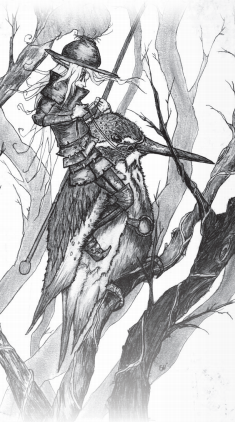
Most of the actions are "free actions", one can perform 1 of them per round, or two of them (each with a -3), or three of them (each with a -6), ...
For example, a character may roll on shooting while the character reacts with dodge (or melee if he has a shield). The arrow hits if the shooting test reaches 12. The dodge or shield is successful if its test reaches 12 (and bests the shooting test). If the arrow goes through, the armor may soak up some of the damages.
By the way, the damage points are equals to the size of the attacker, -1 for a short weapon, +1 for a two handed weapon. So for example, a Belgfolk with a dagger does 1 damage, while a Hairy Nuton with a great sword does 5 damage points.
The system encourages the player to describe the action of their characters. There is one more mechanism available to spice up actions, it's premiums and penalties. A player may select a premium for his actions, but must pay a penalty for it.
The premiums are:
- Acceleration, at the end of the turn, the player initiative score rise by 4 points
- Multiple attacks, for the actions strike and destroy, the character may hit all the characters in its close range, the damage is case of success are halved (round up)
- Severe wound, for the actions strike, shoot, or destroy, damage * 1.5, round up
- Non-lethal wound, for the actions strike and shoot, if successful, the target becomes inconscious or incapacitated
- Precise wound, for the actions strike, shoot, or destroy, the armour protection of the target is halved (round up)
- Efficiency, the test gains a +3
- Overrun, the target is overrun and suffers a -3 to its reaction tests
- Caution, the character goes prudently, his next reaction test will gain a +3
The penalties are:

- Cession of advantage, the character loses cover or is not hidden anymore
- Light wound, for actions strike or shoot, the damage (in case of success) are halved (round up)
- Danger, the character next reaction roll will be with a -3
- Difficulty, the character rolls with a -3
- Sloppiness, the target gains a +3 to its reaction roll
- Slow down, the character ends up his turn with an initiative reduced by 4
- Risk, if the character action fails, the gamemaster determines what incident befells the character (fall, losing the weapon, striking a friend instead, ...)
Here are some examples or premiums and penalties in action:
I rush at the traitor and I strike him mightily with my sword
The player declares two free actions (-3 for each of them), he rushes to the enemy (athletism -3), he then trades his initial hiding place for a severe wound (still mêlée -3).
I shoot at my enemy, right where he has no armour
The player claims a precise wound, he chooses slow down as the penalty (-4 to his initiative score at the end of the action)
I throw my dagger at the torch to extinguish it and leveraging the resulting darkness I flee upstairs
The player goes for 2 actions (-3 to each), destroy on the torch (shooting -3), then moving (athletism -9 (-6 for darkness))
And so on.
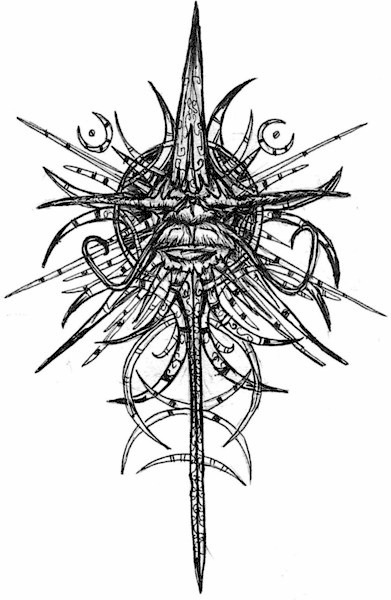
We have seen that characters may use magic with any tests, they can consume a point of Dream to gain a clear dream dice or a point of Nightmare to gain a dark nightmare dice. The player has to describe the magical effect generated.
Spellcasters are those characters who have at least one skill point in chimerism, magic, or onirology, usually they are Dream Mages, Sweet Dreamers, or Rêvirins. Casting a spell requires a certain number of dream threads or of nightmare threads. Those threads can be purchased, or extracted if the character is a Rêvirins. If there are no threads available, dream points or nightmare points can be used, but it's 2 points for each thread required.
Extracting threads from the ear of dreaming giants is a dangerous task. It can only be done by character with at least 1 in Onirology. One gets exposed to the "Néphertine", the bad trip. It affects all the faery people, 1d12 meters from a sleeping giant. In fact, a group might progress along a wall and a giant might be dreaming on the other side and surprise the faeries.
A test of perception at -9 can tell a common faery person that is facing the Néphertine, a Rêvirin can notice with an onirology test at +0. The character that senses the Néphertine has to tell the rest of the party, else madness begins. Characters staying in the zone have to roll will at -3. In case of success the character controls itself and remembers it's all an illusion. In case of failure, a test of endurance is required, at -3, failing it and it's a cardiac arrest, success and it's the loss of 1 hit point. It's important to remember that if a character fails its will test, another character can rescue him with a leadership test at -3.
Hard times. But it's not yet over. After being exposed to the Néphertine, characters are affected by a secondary effect (d12 hours on a d12 table).
Spellcasters can counter a spell they know, if they see the caster or are in range. They can also counter a spell they don't know but they must see the caster in order to do it. The cost of the spell has to be paid and then a confrontation test has to succeed for a successful counter.
Probably it's better to have at least one Rêvirin in the company, to deal with with Néphertine occurences. I probably wouldn't engage the Rêverin in actually collecting the threads, too risky.
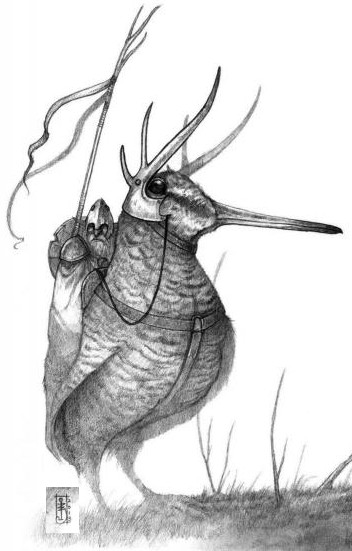
At the end of each scenario, the gamemaster awards experience points to the players.
Here is an indicative scale:
- Find back lost writings on Edenia, 1
- Find back a lost Edenia artefact, 2
- Reconstitute a part of the history of the faery people, 3
- Prevent the nightmare forces action, 1
- Neutralization of an adversary, 2
- Destroy a nightmare creature, 3
- Protect or save a faery person, 1
- Protect or save a group of feary people, 2
- Protect or save a whole faery tribe, 3
(Edenia is the world where the faery people come from, but mostly only the Oubliés seem to remember)
At the end of a scenario, the XPs are used first and foremost to pay back Dream and/or Nightmare debts. If there are remaining XPs they may be used to augument a skill by 1, or augment the Dream score (target score x 2), or augment the Nightmare score (target score x 2).
(If one has 2 in Dream and wants 3, 3 x 2 XPs are the cost)
XPs can also be used to learn a new spell. It costs 12 experience points and comes with a bonus, a nightmare spell. The character may refuse to learn the dark spell, avoiding the temptation of using it (and the dark side cost it implies), but this decision has another implication, since if you know a spell, you can counter it...
Les Oubliés comes in beautiful books, in French only. If you know French and want to get a better closer look, there is a demo kit PDF available.
How to conclude? You can guess, I wouldn't have written a whole summary of the rules here if it weren't good. I got lured in by the illustrations, black on white, and I'm staying for the setting and the rules.

Samia Aci-Sèche and Geoffroy Hassoun (also one of the illustrators) have a produced a beautiful game with a distinctive atmosphere. The layering of the small scale faerie world on top of a 1572 south of France city is alluring. Catholic against Protestant, the Jewish ghetto, connection with the Mediterranean... Dream against Nightmare.
I only scratched the surface of the setting.
I ended up buying all the books. There is the core rulebook, then there is the Atlas of the Terra Incognita, then an Encyclopedia of the Small People, and a few scenarii. The rules do not overflow the core rulebook, one can see stat blocks in the two setting books, but not much else. One could run it with another engine, but the "advantage" dice thing where one can "go dark" is very interesting and the cherry on the top is the third die for the magical effect.
Beautiful piece of work. Some of the rules are a bit hard to grasp upon the first reading, but the second reading ties it all.
Les Oubliés edited by "Les XII Singes"
